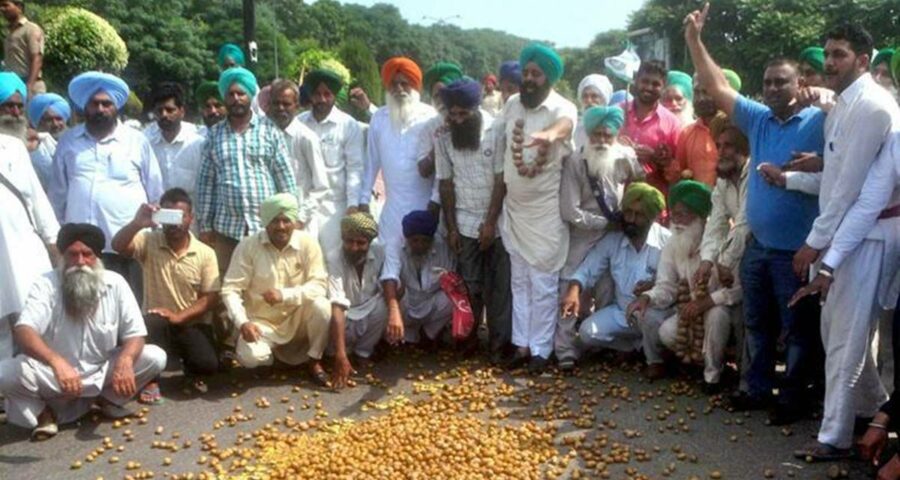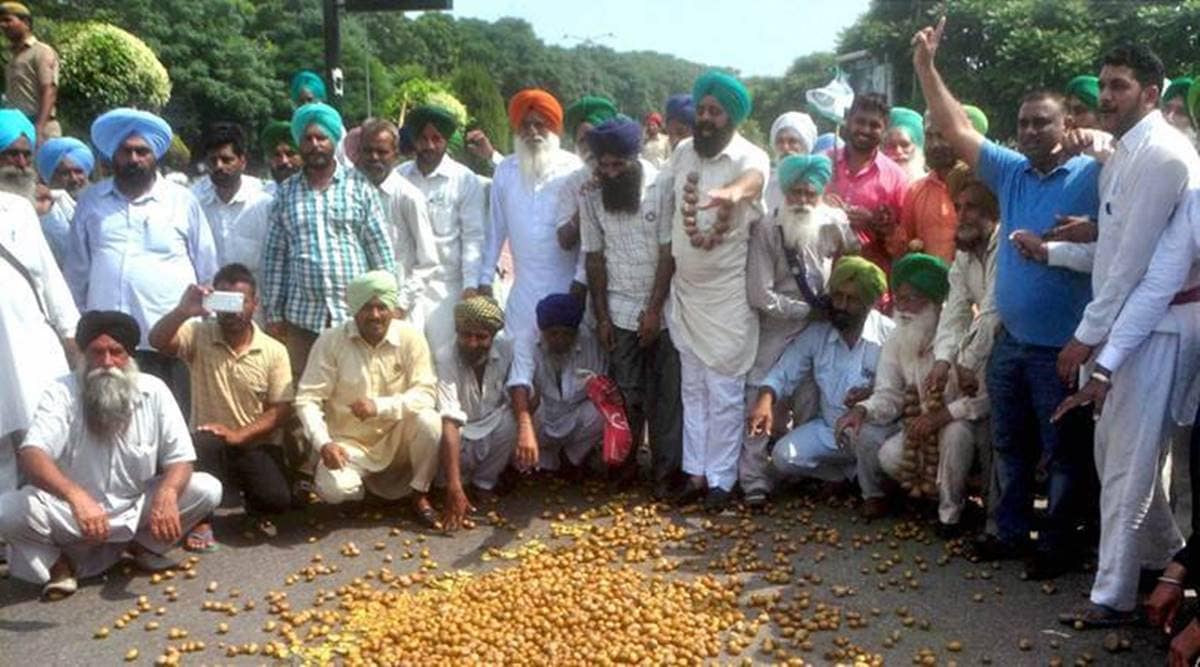“I remember that there two main Kisan Morchas were put up in Chandigarh in 1984 and in 1991 when the gherao of the Governor’s residence was done for 7 days in 1984 and for 15 days in 1991," said Sukhdev Singh Kokrikalan, General Secretary of Bharti Kisan Union (Ugrahan).
As farmers sitting at Delhi’s borders refuse to budge despite the bone-chilling cold wave conditions, previous kisan morchas form the bedrock of the protesters’ firm resolve to stand up and fight for their rights. Over the past three decades, Punjab in particular has witnessed several farmers’ protests where the community has closed ranks.
Talking about these morchas, Sukhdev Singh Kokrikalan, General Secretary of Bharti Kisan Union (Ugrahan), the biggest Farm Union of Punjab, said: “I remember that there two main Kisan Morchas were put up in Chandigarh in 1984 and in 1991 when the gherao of the Governor’s residence was done for 7 days in 1984 and for 15 days in 1991. There were several demands including ‘Karja Mukti’ (Debt waiver) for farmers.”
Kokriklan, who has been actively participating in various morchas, said the he was part of several protests including teachers’ morcha in the 1970s when he worked a school teacher. After leaving his job in late 1990s, he joined farm union full time, he added.
1984 farmers’ protest
In 1984 when the Governor’s house was gheraoed by farmers, the protest was led by then BKU leader Bhupinder Singh Mann, who later became Rajya Sabha MP. The farmers at that time were against zonal restrictions on movement of wheat, and they boycotted bringing wheat to the mandis for several days.
At that time, procurement of wheat for the central pool was critical to the country’s food security.
1991 agitation
During the Kisan Morcha in 1991, the Governor’s house was gheraoed again for 15 days by lakhs of farmers from Punjab in Chandigarh. At that time BKU was led by Ajmer Singh Lakhowal.
Debt waiver was one of the main demands of farmers which was accepted by the government but with a rider.
“Government accepted debt waiver demand with a condition that the debt of only cooperative banks/societies will be waived off and also only those farmers’ debt will be waived off who were defaulters for past three years,” said an expert on farming issues.
“Not even 15 per cent farmers got the benefit of it because small and marginal farmers were paying their loan installments timely under the fear of getting jailed because there was a clause in the cooperatives Act under which the defaulter farmers could be put behind bars for 40 days and the poor farmers under the fear of going to jail used to repay their installments even by selling their lands bit by bit,” said Kokrikalan, adding that big farmers and those who were politically well contacted were never touched by the government despite them being defaulters for years and they got the maximum benefit of that debt waiver.
Other protests
Apart from this several other protests were led by Punjab’s farmers’ unions against anti-farmer policies including one for waiving octroi tax for tractor trolleys carrying farm produce in 1991. All the main organisations of Punjab, including BKU (Ekta) Dakaunda, BKU (Ugrahan), which is the biggest farm union, Punjab Kisan Mazdoor Sangharsh Committee etc. organised several protests for debt waiver, on farm suicide.
Another long dharna was organised by BKU (Ugrahan) for 50 days in Bathinda against farmer suicides during the SAD-BJP’s tenure. Following this government had agreed to pay Rs 2 lakh ex-gratia and job to the one person of the family of those farmers who had committed suicide and nearly Rs 96 crores grant was given to around 4,800 farmers who had committed suicide by that time.
Apart from this, ever since these three farm laws were issued as ordinances, farmers under 32 organisations have been protesting continuously in Punjab for the past six months.
“Though there were several farmers’ protests in the past including some major ones, but this Delhi Kisan Morcha is unparalleled because now it is not only a Kisan Morcha but common people are visiting it and participating in our protest where around 2.5 lakh protesters are sitting at three borders,” said Jagmohan Singh, Bharti Kisan Union (Ekta) Dakaunda General secretary Jagmohan Singh, adding that the outstanding feature of this protest is that it is getting stronger with every passing day despite intense cold. He said that apart from farmers now we are getting a daily footfall of around 25,000 to 30,000 visitors, who are commoners, and visit just to witness our protest and express solidarity for our cause.
Farmers’ protest in other states
In 2017, farmers of western Madhya Pradesh (MP) sat on a dharna from June 1 in Mandsaur demanding higher MSP for their crops and during the agitation five farmers were killed in the police firing.
A week-long march from farmers in Maharashtra was observed in March 2017 and nearly 180 km distance was covered by around 40,000 to 50,000 farmers to gherao Maharashtra Vidhan sabha for not fulfilling their demands.
The farmers from Tamil Nadu protested at Jantar Mantar twice in recent years, once for 41 days and then for months together. Their demands included loan waivers, revised drought package, fair price of their product.
1988 protest led by BKU
Before this the other largest farmers’ protest was held in October 1988 when the most prominent farmer leader in the Indian farm history Mahinder Singh Tikait of Bharti Kisan Union, which is the mother of most of the factions of today’s BKUs, led lakhs from UP to Delhi and the entire Boat Club was occupied by the protestors fighting for 35 demands.
Source: Read Full Article


